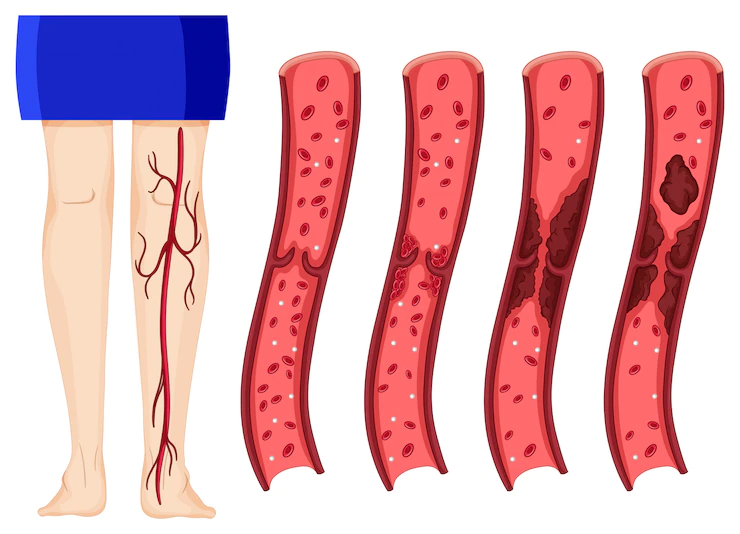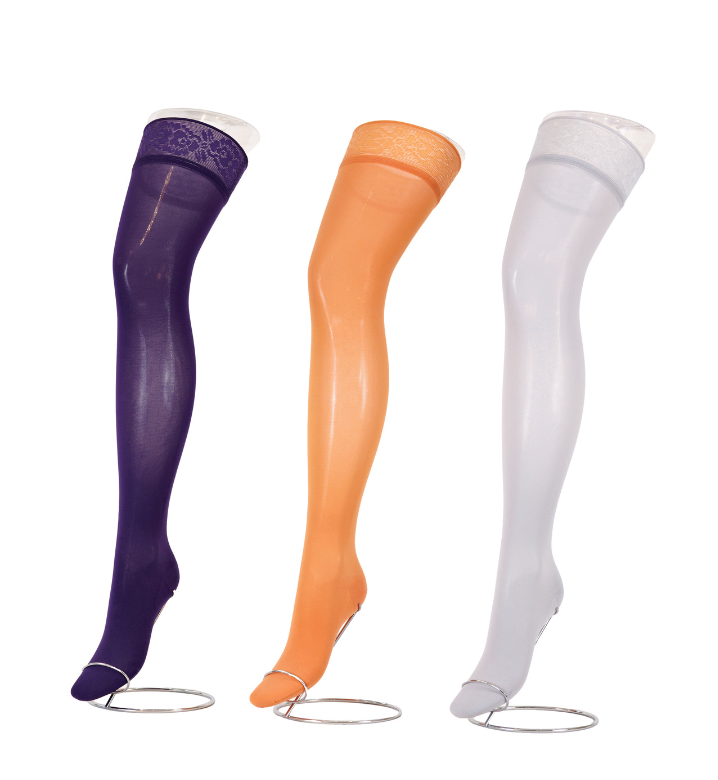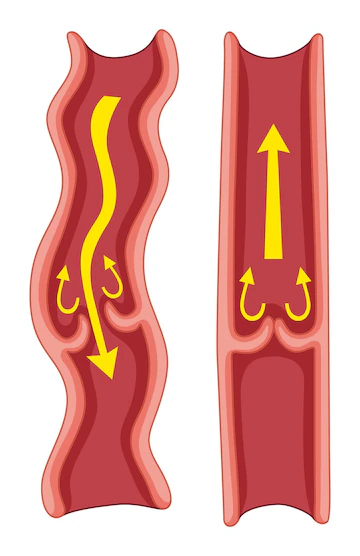Deep Vein Thrombosis (DVT) Treatments
Unlike other forms of vascular disease where risk factors are impacted by age or other medical conditions, deep venous thrombosis (DVT) may occur in people of any age at any level of health, from active athletes to those with limited mobility. If left untreated, DVT may lead to serious conditions such as pulmonary embolism, which causes more fatalities than Breast cancer and AIDS combined.
Deep Vein Thrombosis Treatments at Monterey Bay Vascular
If you have pain, redness, swelling, warmness, and/or enlarged veins near the surface of the skin, you may be experiencing symptoms of deep vein thrombosis (DVT) and need to see a doctor as soon as possible. At Monterey Bay Vascular, we provide a range of treatment options to address the specific nature of your deep vein thrombosis (DVT).

How Is DVT Treated?
DVT treatment ultimately aims to stop the blood clot from getting larger or breaking off and traveling to your lungs. Treatment will also help to prevent the chances of developing additional blood clots.
Medications for Deep Vein Thrombosis
Anticoagulant medications or blood thinners are the most common medications for DVT treatment. Anticoagulants can keep a clot from growing or breaking off. They also prevent new clots from forming. Some of the more popular anticoagulants are dabigatran, rivaroxaban, apixaban, or edoxaban. Doctors recommend taking the drugs for six months.

Compression Stockings
Compression stockings are unique socks that exert pressure on your ankle and get looser as they go up to your knee. The socks put pressure on the veins, preventing blood from pooling.

Thrombectomy
Mechanical thrombectomy or thrombectomy is a technique that helps treat blood clots resulting from Deep vein thrombosis (DVT). Doctors use imaging techniques to pinpoint the location of the blood clot.
To begin, a local anesthetic is used to numb the area. Next, a catheter and a clot-removing device gently break up and remove the blood clots. Additionally, an angioplasty will be attached to the end of the catheter. This is a specialized, balloon-like tool that will be used to restore your weakened blood flow. To remove the clot, we will use a another special tool to vacuum the clot from your vein. As a result, optimized blood flow will start to return to your legs. In some cases, the vascular surgeon will insert a stent to keep the blood vessel open. This minimally invasive procedure be done within an hour and does not require you to spend the night in a hospital.
For many patients, a thrombectomy offers immediate benefits, eliminates the need for major surgery, and alleviates painful symptoms. This procedure also provides long-term benefits to your health and dramatically reduces your risk of developing post-thrombotic syndrome. In addition, you are much less at risk for contracting chronic, life-threatening complications that affect your quality of life.
Thrombolytic Therapy/Thrombolysis
Patients diagnosed with more serious cases of DVT are treated with thrombolytic therapy. Here, a specialized agent is used to break down the blood clot. The agents are clot-busters that will help break down the blood clot(s) of your blockage site. During thrombolytic therapy, we will use a guided catheter to inject the thrombolytic agent to the site and close the area of the clot. The catheter is guided by X-ray imaging and delivers the drug to the blood clot. Once the agent is delivered to the area, the agent will reside for some time until the blood clot is broken up. This is a simple, minimally invasive procedure that it will only take an hour. Our vascular surgeon will decide which procedure to use once they receive your diagnostic test results and review your medical history.
IVC Filter Placement And Removal
Blood clots that develop in the veins of the leg or pelvis from deep vein thrombosis (DVT), occasionally break up travel to the lungs. This is called a pulmonary embolism. An inferior vena cava (IVC) filter is a small cone-shaped device implanted just below the kidneys. An IVC filter traps large clot fragments and prevents them from traveling to the heart and lungs. IVC filters are placed in patients who have a history of recurring deep vein thrombosis (DVT), or who are at high embolism risk as an additional “safety net.”
Our surgeon will use IVC filters in patients who cannot be successfully treated through other, less invasive methods- such as blood thinners, a thrombectomy, or thrombolysis. We use state-of-the-art, retrievable filters to give patients the flexibility of leaving the filter in place permanently or removing it from the vena cava after eliminating the risk of an embolism.

Deep Vein Thrombosis – Prevention
Deep vein thrombosis can lead to life-threatening health conditions. However, lifestyle changes can help you reduce these risks.
A sedentary lifestyle increases the risk of blood pooling into veins. Even if your work involves sitting or standing for hours, make sure you take a break to exercise your legs. Exercise helps in promoting blood flow, reducing the risk of a clot.
Obesity and smoking are also significant risk factors. Engaging in regular workouts can help you maintain a healthy weight. Additionally, tobacco smoke damages the vein interior. Quit smoking to optimize your vascular health.
Compression stockings will help prevent blood pooling and clotting. They are available in different compression strengths and lengths. While you may find them at a local drug store, going to your doctor will help you find a model that meets your needs.
Blood-thinning medication can help in reducing the risks of clotting before and after surgery.
Why Monterey Bay Vascular?
At Monterey Bay Vascular, we offer coordinated care to prevent, diagnose, and treat venous disease. We understand, everyone deserves to live a long, happy life. The venous disease may lead to limb loss and other life-threatening conditions such as pulmonary embolism. Our licensed physicians use state-of-the-art tools and technology to tackle all your problems related to your venous system. Thanks to our vast wealth of experience, we also work with the patient to develop a unique solution that fits your needs. Contact us today to learn more about the venous disease treatment we offer and schedule an appointment today!